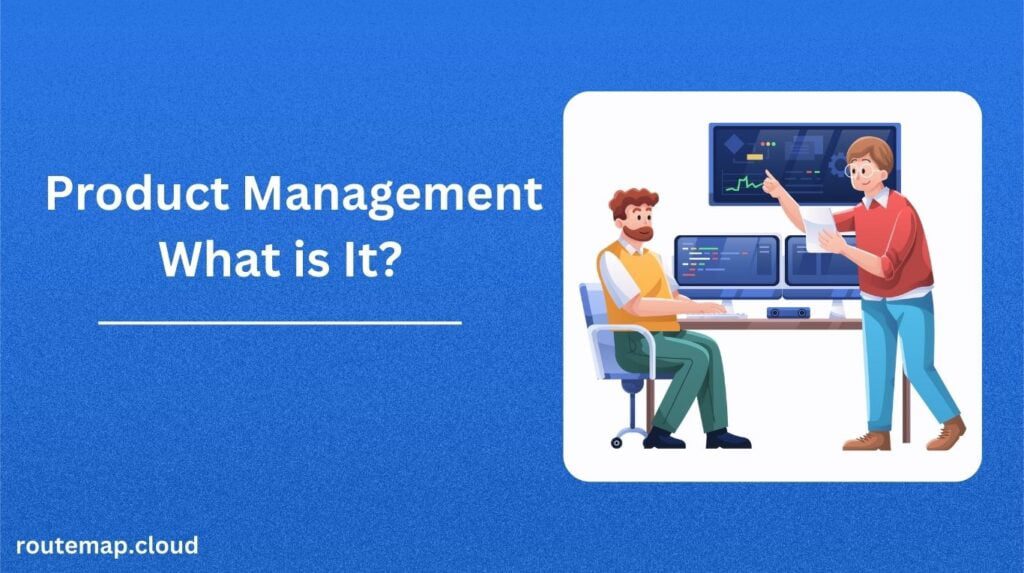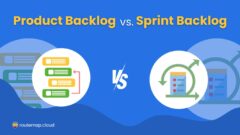What is product management? Is it that important and why? – If these frequently asked questions are lingering in your head, you’ve come to the right place!
Generally speaking, however, there is no correct answer to them. Why? It is because the product management meaning varies from one profession to another. But worry not, all you need to know is that it is extremely important to any product development process.
Here are the details.
What is product management?
Product management is a strategic process of focusing on delivering a product or service to the market. Whether creating a new product or developing a company’s existing one, the goal is to build a product that fulfills not only user needs but also the company’s objectives.
Nowadays, product management is more of a role within the product development team, which focuses on executing the product lifecycle successfully.
Normally, product managers are the ones responsible for raising and taking product management principles into action. Those principles usually are:
- Pitching and positioning their new ideas to help develop features and products.
- Collaborating with other team members, including engineers and designers, to make ideas become products.
- Keeping products satisfying the needs of customers or target users.
These principles are also what help you differentiate between 2 positions when comparing product manager vs project manager. Project managers, on the other hand, are usually responsible for coordinating, managing, and keeping an eye on projects.
Why is product management important to your business?
Product management has one important purpose: to help the organization deliver the right product strategy and develop a successful product.
More importantly, it will help product managers to develop a vision and roadmap for the product so everyone on the team can pursue the same goal.
What is the product management process?
Although we can define it as a strategic process (as mentioned above), there is no correct way to clarify how to manage a product. This process can change over time to adapt to various factors, such as the product life cycle, the organization, members of the product team, and more.
Still, there are similarities among product management processes to define the main role of each stage.
1. Develop your vision
Product vision is a vital part of the product management process as it helps define how the final product looks and in which direction the product is heading. This is not the product strategy yet, but it is the first step to helping develop one when the whole team discusses a new product.
To develop a proper product vision, a product manager has to answer these questions:
- What is the user persona (or target user) of this product?
- What problems will the product solve for users?
- How to measure the product’s success?
By answering these questions, product managers can set goals and requirements for their product development. Besides, they can also give out principles for the whole team to follow.
2. Understand your customers
The next stage of the product management process is understanding the market and your customers. And for that, market research is required to help product managers collect and analyze the information.
Then, managers can use this information to compare it with existing products on the market and study the competition. As a result, it helps them identify what the market needs, the users’ problems, and ultimately, their potential customers.
Moreover, this is also when a project manager cooperates with a marketing manager to conduct market research activities. These activities include:
- Create product user personas.
- Pinpoint the customer’s needs.
- Study their behaviors.
- Conduct primary and secondary research.
Market research and understanding your customers are crucial to product management and development. With these data and analysis in hand, product managers can develop an effective strategy for a successful product.
3. Develop a strategy
After establishing a vision, researching the market, and knowing your customers, it is time to develop a specific strategy. This strategy needs to describe how to achieve the defined goals of a product and set clear milestones so the team can work on it.
Additionally, an effective strategy has to specify the product’s main features, users’ needs, and users themselves. More importantly, it must define key performance indicators (or KPIs) that a product has to meet.
Typically, we document product strategies in the form of roadmaps to let the team manage the product development process at all stages.
Roadmaps are a tool to provide a framework with timelines and specific activities for teams. They also specify the current state of the product development process, including its vision and goals.
However, the traditional ways of making these roadmaps involve using Gantt charts, spreadsheets, or Excel, which are usually hard to understand and time-consuming. Therefore, most product managers will choose more agile product roadmap methods to develop their strategy.
You can read more about the Flexible and Advanced roadmaps for Jira if you are using the Jira software and want to make the most out of it.
4. Start product development
When every step in the preparation stage is ready, the team can now move on to start developing the product. This is also called the executing product development and testing stage. And as you can tell, it has two different phases.
At this stage, the product manager will control how to implement the roadmap and take part in the related activities.
4.1. Execution phase
Product development starts with listing out technical specifications, main features, and designs of the product. Although most of these activities are assigned to other team members, the product manager is also involved in writing these specifications.
The main goal here is to keep the product aligned with the users’ needs and communicate the requirements to the project manager and development team. For that, there will be internal meetings and possibly interviews with some potential users.
As a result, this will help product managers know which features need to be prioritized and which features are unnecessary.
4.2. Testing phase
Another responsibility of the product manager is to specify the Minimum Viable Product (MVP). This is also considered a prototype of the product under development, allowing product managers to collect feedback and make adjustments based on user input.
Moreover, team members will conduct user acceptance testing (UAT) in this phase to test product usability. UAT happens in different stages throughout the development process to analyze how users interact with the product, discover errors, and more.
5. Advertise your product
Once the product is complete and ready to hit the market, it is the perfect time to advertise it. At this point, the product manager will work with the marketing team to finalize both marketing and launching plans.
For a successful marketing and launching campaign, there are 3 things to consider:
- Build good customer awareness.
- Define a pricing strategy for the product.
- Decide the most effective release time.
Throughout this stage, product managers are the ones who deliver the operating plan and aim to track the marketing results.
6. Conduct metrics tracking
After launching the product, the product manager will track its progression. He or she will monitor and analyze the data to evaluate the success of the product.
There are several metrics need to be taken into consideration:
- Financial metrics, like monthly recurring revenue, help managers identify the product’s revenue.
- User engagement metrics, such as session duration, determine how long customers used the product.
- User interest metrics, like retention rate, calculate the number of users who stay loyal to the company and product.
- Product popularity metrics, like the number of sessions per user, reflect how often customers use the product.
There are also other metrics, like customer reviews, to evaluate how satisfied the customers are when using your product.
By taking these metrics into account, product managers can measure and evaluate the success of their product launch and the product itself. Besides, the results and analysis can also help them decide the product’s future roadmap, what features they should add, and how well the product performs.
Keep in mind that data and insights are extremely valuable, so do not lose track of them.
Most crucial skills in product management
As you can see, a product manager takes on many roles and responsibilities. And to thrive in product management, here are some of the most crucial skills in product management:
- Have deep research abilities.
- Acknowledge what needs prioritization.
- Empathize your users.
- Able to storytelling.
- Acquire a leadership that inspires.
By developing these skills, you can manage better development and connect your team members to deliver a product that meets users’ needs and the company’s standards.
Final thoughts
So, what is product management, and why is it important? The answers can vary depending on the fields, people, professions, products, and more. The thing to remember is that product management will make your effort worthwhile.
More importantly, there are many aspects to remember in the product management process to keep things running smoothly. If you are a product manager, do not forget to communicate with your team to bring out the best results!




